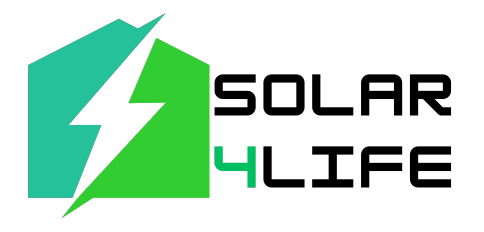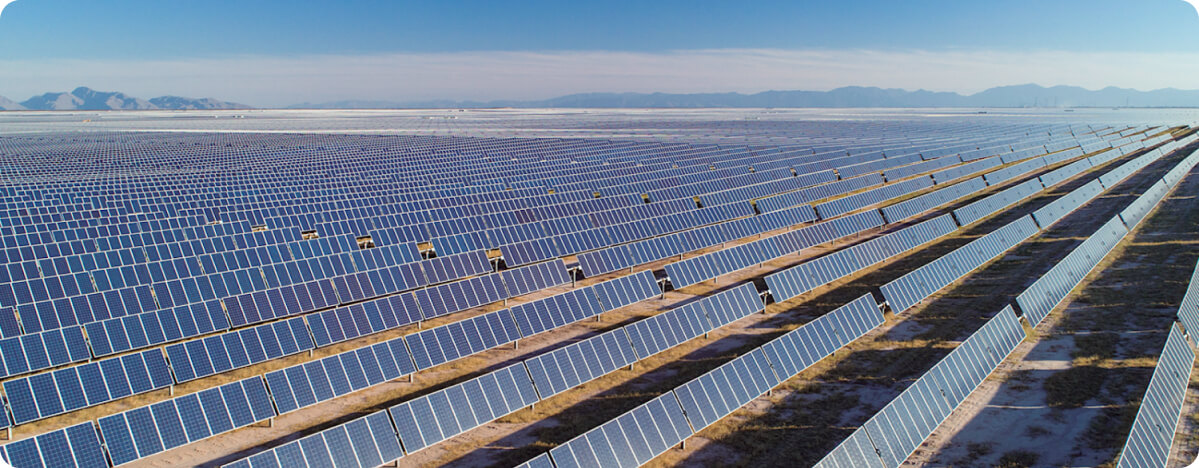Looking to buy solar panels for your home? Our ultimate guide covers everything you need to know—from choosing the right panels to installation tips. Start saving on energy bills today!
Guide To Buy Solar Panels For Your Home
When it comes to using renewable energy resources, people have been able to embrace solar energy because of the improved affordability of Solar energy panels that assist them in lowering their energy costs and becoming eco-friendly.

But how do you find the best solar panel for your home? Let’s walk through the factors influencing your choice and what to avoid to attain maximum efficiency.
How to Choose Solar Panels for Your Home
Identifying the right solar panel could a bit be challenging as there are various varieties in the marketplace. It is fundamental to emphasize the energy demands for your residence, the size of the roof, the amount of money you are ready to spend, and the location.
In addition to these, other factors such as the efficiency of the panel itself, the lifetime for which it can serve its purpose, and the warranties attached to it are equally important.
By the end of this article, you'll have a clear understanding of the different types of solar panels, the cost involved, and how to maximize the lifespan of your solar investment with our Guide To Buy Solar Panels.
You will also take into account the efficiency, aesthetics, and cost of the various types of panels to settle for the best. Let’s show some factors you need to consider before buying solar panels for your home:
Factors To Consider:
Before diving into the world of solar energy, it's vital to assess several key factors that will determine the efficiency, effectiveness, and overall savings of your solar investment.
-
Energy Needs: Calculate your household's average energy consumption by reviewing your electric bills over the past year.
-
Roof Size and Angle: Larger roofs can accommodate more panels, while steeper roof solar panel angles can increase efficiency.
-
Climate and Sunlight: Homes in sunnier climates benefit more from high-efficiency panels, while areas with less sunlight may require a different approach.
-
Budget: The upfront cost of solar panels varies significantly by type and installation complexity. Federal incentives can reduce this cost, but it's essential to factor in maintenance and battery storage as well.
Also Read: How Does A Solar Battery Work? | Energy Storage Explained for Beginners
Solar Battery Storage Size
Solar battery storage is a critical aspect of your solar energy system, as it ensures you have access to electricity even when the sun isn't shining. A solar battery stores excess energy generated during the day, allowing you to use solar power even when the sun isn't shining.
Choosing the right solar battery size depends on your energy consumption, solar panel output, and whether you want to be entirely off-grid or grid-connected.
The solar battery capacity ideal for a specific place depends on factors such as energy usage, solar panel energy creation, and if they are seeking off the grid or grid connected.
More specifically, larger houses, with many more appliances and consequently, high energy needs, necessitate larger home battery storage solutions.
Here are some factors to consider when selecting a solar house battery:
-
Energy Usage: Measure how much electricity you consume daily and during peak hours.
-
Backup Power: If you live in an area prone to blackouts or want to go off-grid, you'll need a larger solar power battery system.
-
Battery Type: Lithium-ion solar batteries are the most popular due to their high efficiency and longer lifespan, while lead-acid batteries are a cheaper alternative but may require more maintenance.
Types of Solar Panels
When it comes to solar panels, there are several types to choose from, each with its advantages and drawbacks. Here's a breakdown:
DC or AC
Most solar panels are DC, which means they create a high voltage Direct Current (DC) that is routed to a wall-mounted inverter device (known as a string inverter), which converts it to Alternating Current (AC) for use in your home's electrical circuits.
Some panels are classified as AC, and they come with a pre-installed microinverter, usually an Enphase microinverter. The panel provides DC electricity as normal, but the microinverter quickly converts it to AC. For more information on the advantages and disadvantages of string inverters versus microinverters, consult our solar inverter purchasing guide.
Monocrystalline
Monocrystalline solar panels are popularly recognized due to their sleek and elegant look and high solar panel efficiency. Photovoltaic panels made of monocrystalline structures, single and the purest detail convert solar energy into electricity through the photovoltaic effect and have the best performance even in limited areas.
It makes these units perfect for house owners. On the downside, this type of panel is usually expensive compared to others available in the market.
Polycrystalline
Polycrystalline panels are less efficient than monocrystalline, but they're also more affordable. These panels are made from multiple crystals, giving them a distinctive blue color. They perform well in moderate climates but may be less effective in areas with limited sunlight.
Thin-Film
Thin-film solar panels are also light and flexible so they can be used on non-traditional shaped surfaces such as curved surfaces. They are less efficient thin film panels although useful, box-shaped layouts are contained with moderate. Another factor to note when using these panels is that they are more suited in cases where space in a building is not an option.
Concentrated PV Cell
Concentrated PV cells use lenses to focus the sunlight onto highly efficient solar cells or mirrors for the same purpose or both. These panels make the best efficiency rates, however, their price is quite high so not most people use them at home rather they are mostly utilized by industries.
Solar Panel Cost Analysis
Investing in solar panels requires upfront costs, but the long-term benefits often outweigh the initial expense. Here's a breakdown of the solar panel cost involved:
Cost of Solar Panel Installation
The average cost of installing solar panels depends on several factors, such as the size of your home, the type of panels you choose, and your geographical location. According to SolarQuotes, these are the current pricing ranges for high-quality solar panel installations.
-
5kW: $4500-8000
-
6.6kW: $5500-9000
-
10kW: $8000-13,000
This price can vary significantly depending on several factors, including:
-
Size of Your Home: Larger homes require more panels and racking to generate sufficient energy, leading to higher installation costs.
-
Type of Panels: High-efficiency panels generally have a higher upfront cost but can offer long-term energy savings due to their improved energy production.
-
Geographical Location: Canberra enjoys high solar irradiance, making it an ideal location for solar panel installations. This can lead to lower installation costs per kilowatt-hour generated.
-
Additional Costs: Factors like permitting fees, electrical upgrades, and labor costs can also contribute to the final price.
Federal Incentive for Installation
These costs are often reimbursed in some countries, either directly or through the taxes of that country, to encourage the population to adopt solar energy.
For example, in Australia, the federal government has SRES, that is Small Short-Scale Renewable Energy Scheme, which can be claimed back for residential and commercial solar panel installations. The SRES also has a feed-in tariff which enables you to export excess solar electricity to the grid for a pre-determined amount.
It is also a good system for good reason since most local areas offer Solar rebates but the amount differs in various regions. Most of the other Australian states and territories also offer other contributory Programs such as:
-
State-based rebates: Some states provide rebates that can significantly reduce the upfront cost of solar panel installation.
-
Feed-in tariffs: These tariffs vary by state and territory, but they generally allow you to sell excess solar energy back to the grid at a premium rate.
-
Renewable energy certificates (RECs): RECs represent the environmental benefits of renewable energy production. You can sell RECs to earn additional income.
Solar Panel Installation Cost per kWh
For evaluating different solar panel offerings, the cost per kilowatt-hour (kWh) is a useful parameter. In the average case, the cost of solar panels including installation will be around $2.50 to $3.50 per watt, which varies according to the type of panel and the geography. The Cost per kWh calculation is a good metric for estimating how much savings on energy bills would be available during the period when the cost of the solar panel is being recouped.
Here's how to calculate cost per kWh:
-
Determine the system size: This is typically measured in kilowatts (kW).
-
Calculate the total installation cost: Multiply the system size by the cost per watt.
-
Estimate the annual solar power generation: This depends on your location, solar panel efficiency, and other factors.
-
Divide the total cost by the annual energy production: This will give you the cost per kWh.
Maintenance and Longevity
They are relatively simple in installation and workings and don’t need a lot of maintenance, although some steps of maintenance are needed for the efficiency and durability of the solar panels. They are also able to claim that they will add a few extra years onto your panels.
Solar Panel Maintenance
The said accumulation of dirt, bird feces, or other spotted debris would need to be checked for at least intervals every month. In the same manner, being able to manage the performance of a system with gadgets or apps will give an understanding of any performance bias which can be used to avert loss in the performance of solar panels through the much-recompensed energy feeds.
Cleaning Solar Panels
It is recommended to wash the solar panels at least twice every year to achieve maximum exposure to sunlight. The correct way to clean a solar panel includes the use of water and a soft brush to collect any residual matter. Do not make use of rough materials which may ruin the protective covering because it may lower the efficiency level of the solar panel ranking.
How Long Do Solar Panels Last?
Typically between twenty-five and thirty years is the acceptable lifespan of the solar panels although it is clear that their efficiency dips gradually as well. Most producers provide warranties assuring maintenance of 80% efficiency within the first 25 years. Beneath good care and appropriate treatment, the energy production by the panels can go beyond the average solar panel lifetime.
Choosing suitable solar panels and taking into account their price and the complexity of their use it is possible to reasonably install solar panels at home. Solar energy does not only save money but also helps make the world a better place with the idea of encouraging green energy.
Choosing Solar4Life for Sustainable Energy Solutions
The advantages gained when choosing solar energy are incredible, from minimizing the impact on the environment and cutting back on energy costs to ensuring that one is equipped with a self-sufficient source of energy for many years to come.
At Solar4Life, there is always a core principle: it is preparation for energy independence and its realization through the provision of a solar power solution tailored to your needs. Our solar services are also flexible and adaptive to changes in solar technology so that we assure you of efficient and clean energy all the time.
Why not give yourself or your household the best possible energy solution with Solar4Life? Feel free to give us a call now to help you understand how the sun can be of use to you with some passionately devoted professional assistance. Help us help you achieve energy independence, save money, and sustain the future.
FAQs
1. How do you decide how many solar panels I need?
The number of solar panels you need depends on several factors, including your household's energy consumption, the available roof space, the efficiency of the solar panels, and the amount of sunlight your location receives. To calculate, you should:
-
Determine your average monthly energy usage in kilowatt-hours (kWh).
-
Assess how much sunlight your roof gets (measured in peak sun hours).
-
Calculate the system size needed by dividing your monthly energy consumption by the number of peak sun hours and panel efficiency. A solar provider can offer a detailed assessment and recommendation based on these specifics.
2. Where should the solar inverter be placed?
It is advisable to keep the solar inverter in a shady, dry, and cool space behind the sun and water. Typically the best locations would include garages, utility areas, and other outdoor shade walls.
Extreme weather conditions must not be allowed for the inverter to maximize its efficiency and longevity, especially with the cold regions requiring thermal protection. Adequate ventilation is also vital for the normal operation of the equipment. It is usually advisable to have a solar panel inverter with a good warranty on the panels for peace of mind.
3. How many solar panels do I need to charge a Tesla?
To charge a Tesla, you'll need about 10-12 solar panels, depending on the model and the average miles driven daily. The calculation depends on the following factors:
-
Tesla's battery capacity (ranging from 50 kWh to 100 kWh, depending on the model).
-
The energy produced by each solar panel is typically around 300-400 watts.
-
Your daily driving habits (miles per day) and local sunlight conditions. An average Tesla consumes around 30 kWh for 100 miles of driving, so the total panel requirement can vary based on how much you drive.
4. How many solar panels do I need to run my house in Australia?
To power an average Australian home, you'll need around 15 to 25 solar panels. This number depends on:
-
The average household energy consumption is about 15-20 kWh per day in Australia.
-
The efficiency and wattage of the panels are typically between 300 and 400 watts per panel.
-
The sunlight conditions in your location can vary significantly across Australia. For a typical 5 kW solar system, which is often enough for most homes, around 16-20 solar panels are required. However, a professional assessment is recommended for a precise estimate.

